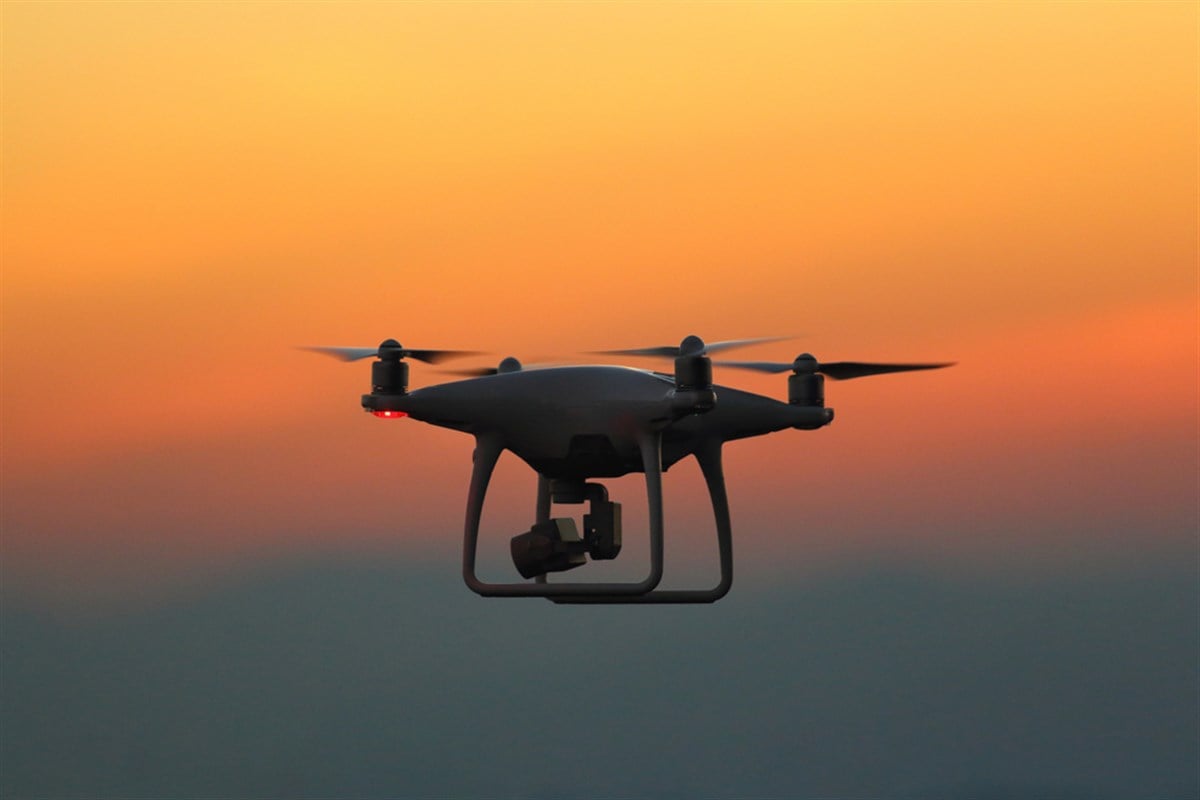 PayPal stock has fallen well below 52-week highs as the market's attention is driven to other areas of the technology sector, creating an... ͏ ͏ ͏ ͏ ͏ ͏ ͏ ͏ ͏ ͏ ͏ ͏ ͏ ͏ ͏ ͏ ͏ ͏ ͏ ͏ ͏ ͏ ͏ ͏ ͏ ͏ ͏ ͏ ͏ ͏ ͏ ͏ ͏ ͏ ͏ ͏ ͏ ͏ ͏ ͏ ͏ ͏ ͏ ͏ ͏ ͏ ͏ ͏ ͏ ͏ ͏ ͏ ͏ ͏ ͏ ͏ ͏ ͏ ͏ ͏ ͏ ͏ ͏ ͏ ͏ ͏ ͏ ͏ ͏ ͏ ͏ ͏ ͏ ͏ ͏ ͏ ͏ ͏ ͏ ͏ ͏ ͏ ͏ ͏ ͏ ͏ ͏ ͏ ͏ ͏ ͏ ͏ ͏ ͏ ͏ ͏ ͏ ͏ ͏ ͏ |
| | Written by Gabriel Osorio-Mazilli 
Some investors argue that the market’s pricing mechanism is efficient, with all available information already reflected in stock prices. But this is not always the case. Companies can fall off Wall Street’s radar, creating a disconnect between fundamentals and valuation. For bold investors, these moments present an opportunity to buy into undervalued stocks that have slipped out of favor. PayPal Holdings Inc. (NASDAQ: PYPL) is a clear example. While the technology sector spotlight remains fixed on a handful of high-profile names, PayPal, a globally recognized brand, has been left behind. The stock trades at just 72% of its 52-week high, firmly in bear market territory. The question now is whether the market has mispriced PayPal’s prospects. With the Federal Reserve beginning what may be a long-term easing cycle, both consumer and business spending could accelerate in the coming quarters. As a leader in digital payments, PayPal sits at the center of this shift, making its current valuation look increasingly disconnected from its true potential. PayPal’s Decline Looks Overdone Year-to-date, PayPal stock is down 21.2%, a drop that suggests deteriorating fundamentals. Yet a closer look at the company’s latest quarterly earnings shows the opposite. Revenue rose 5% year-over-year to $8.3 billion. While modest, this growth came during a quarter marked by tighter budgets and tariff fears, making it a stronger performance than it appears at face value. Market share gains were evident, too, as PayPal added two million new PayPal and Venmo card users in the United States, bringing its active accounts to 438 million in Q2 2025. More importantly, existing customers are transacting more. Total payment volume increased 6% year-over-year to $443.5 billion, showing that PayPal’s network effects are deepening. Profitability also tells a different story than the stock price. By investing in more streamlined services, PayPal was able to turn 5% revenue growth into 20% earnings per share (EPS) growth. EPS came in at $1.40, beating the MarketBeat consensus estimate of $1.30 by 8%. With interest rates now trending lower, the company is well-positioned to continue beating expectations. Analysts See More Upside The current consensus price target for PayPal is $84.50 per share, which implies about 26% upside from today’s levels. But some analysts are far more bullish. Andrew Boone of JMP Securities has a $100 target, while Joseph Vafi of Canaccord Genuity stands at $96. These calls represent 48.5% and 42% upside potential, respectively, and reflect confidence in PayPal’s ability to grow earnings even in a slow macro environment. The optimism is not limited to Wall Street analysts. Institutional investors are stepping in as well. In September 2025, Amiral Gestion boosted its PayPal holdings by 131%, raising its position to $23 million. That kind of increase signals conviction and reinforces the view that the market is undervaluing PayPal’s long-term potential. Where PayPal Could Be Headed Looking forward, Wall Street expects EPS of $1.54 for Q2 2026, about a 10% increase from PayPal’s most recent earnings beat. With the Fed’s easing cycle set to provide a tailwind for digital payments, PayPal could surprise again to the upside. The company also benefits from its scale and stickiness. With 438 million active accounts and growing, PayPal has embedded itself into consumer behavior in ways new entrants struggle to match. As users transact more frequently, PayPal’s platform economics strengthen, creating a long-term growth engine that is not fully appreciated at today’s valuation. For investors willing to take a contrarian stance, the current setup may look like a rare opportunity. With PayPal stock still well off its highs yet continuing to deliver steady growth, the disconnect between perception and reality is striking. PayPal Stock Looks Undervalued Despite Recent Weakness PayPal stock may have fallen out of favor, but its earnings growth, expanding user base, and institutional support tell a very different story. With price targets as high as $100, and the Federal Reserve providing a macro tailwind through lower rates, the stock looks undervalued relative to its fundamentals. For investors seeking overlooked opportunities in the computer and technology sector, PayPal is worth a closer look.  Read This Story Online Read This Story Online |  What I just learned about what's unfolding in the White House is truly stunning…
And you need to see it for yourself.
Once you see what's unfolding behind the scenes, you'll understand why I rushed this interview and opportunity to you today.  Click here to watch this video Click here to watch this video |
| Written by Jeffrey Neal Johnson 
For the entire emerging electric vertical takeoff and landing (eVTOL) industry, the single greatest uncertainty has not been technology, but the regulatory path to commercialization. In late September 2025, that uncertainty was dramatically reduced for Vertical Aerospace (NYSE: EVTL). In a powerful dual-announcement, the UK's top aviation regulator published a formal roadmap for eVTOL operations, which was followed just days later by a new government funding award for a key project involving Vertical. This coordinated signal of national support is a pivotal development, transforming Vertical's 2028 certification target from a corporate goal into a date now formally supported by a government and regulatory framework. For investors, this provides the clearest evidence yet of a viable path to market, powerfully validating the detailed financial blueprint the company unveiled at its recent Capital Markets Day. For a sector filled with ambitious plans and limited evidence, this level of tangible, government-backed progress is what separates the eventual leaders from the hopefuls, making a clear case for why Vertical is emerging as the cream of the crop. How a Clear Rulebook Creates a Competitive Edge The centerpiece of the news is the UK Civil Aviation Authority's (CAA) eVTOL Delivery Model. This document is a procedural update and a clear rulebook that creates a powerful competitive advantage, or moat, for Vertical Aerospace. The framework provides clarity on three critical points. - The Highest Safety Standard as the Baseline: The CAA’s model officially reaffirms SC-VTOL as the certification basis. This requires proving a probability of catastrophic failure of less than one in a billion flight hours, which is the same stringent benchmark applied to large commercial airliners. For investors, achieving this high bar first is a key asset, as it is expected to facilitate easier validation in other global markets that prioritize safety, creating a significant first-mover advantage.
- A No Surprises Collaborative Approach: The document validates Vertical's uniquely close, lockstep relationship with its regulator. This deep engagement, which includes participation in all of the CAA's eVTOL working groups, is designed to front-load the complex certification work. This strategy significantly mitigates the risk of costly late-stage surprises or delays that can add hundreds of millions to development costs and derail timelines.
- Operational Clarity from Day 1: The CAA's framework confirms that both day-and-night and all-weather (VFR/IFR) flights will be permitted from the start of service in 2028 for qualified aircraft. This is a crucial detail for financial modeling, as it removes major operational constraints and enables a far more scalable and reliable business model with higher potential aircraft utilization rates.
How UK Funding Accelerates the Plan A regulatory roadmap is only as valuable as the real-world plan to execute it. Days after the CAA's publication, the UK government provided a powerful signal of its commitment by awarding new funding through its Future Flight program. Vertical Aerospace is a central partner in a key project that received this funding: the OxCam AAM Corridor demonstrator. This initiative is a consortium of the entire advanced air mobility ecosystem, bringing together Vertical's VX4 aircraft with Bristow (NYSE: VTOL) (operational expertise), Skyports (vertiport infrastructure), and NATS (air traffic control). For investors, this demonstrates that Vertical is not just developing an aircraft in isolation but is a key, integrated player in a funded, government-backed national strategy. This level of systemic de-risking represents a key indicator of strategic maturity, providing significant confidence in the company's ability to launch commercially. A Clearer Path Forward, Solidified by Certainty The recent wave of regulatory certainty and government support significantly strengthens Vertical's financial plan, which was first presented at their Capital Markets Day on Sept. 17. The transparent and collaborative framework established by the CAA substantially reduces the risk of costly regulatory delays, making the company's financial projections more credible. The stated net funding requirement of $700 million to reach certification now appears more realistic. This improved outlook provides a more solid foundation for the company's targets: achieving cash flow breakeven in Q4 2029 and generating over $100 million in positive free cash flow in 2030. With a market capitalization of approximately $533 million, the stock currently trades at a significant discount to the consensus 12-month analyst price target of $10.43. The recent announcements offer a clear, data-driven argument for closing this valuation gap. For investors, the combination of a de-risked regulatory path, direct government backing, a clear financial plan, and a management team strengthened by top-tier regulatory expertise presents the most complete and credible commercialization strategy in the sector, making a powerful case for the stock's long-term potential.  Read This Story Online Read This Story Online |  While many are busy chasing the usual AI trends, a bigger opportunity is quietly brewing—and most are missing it. Imagine a major shift in how and where AI is built, opening up incredible wealth opportunities for those in the know.
I've found 9 AI companies primed to lead this change. These aren't the tired "AI hype" stocks; they're companies with real US operations, proven revenue growth, and deep AI integration. I've put all the details in a FREE report: "Top 9 AI Stocks For This Month." |
| Written by Jeffrey Neal Johnson 
On Sept. 30, the market delivered a powerful and unambiguous verdict on Draganfly Inc. (NASDAQ: DPRO). Shares of the drone technology company surged over 17%, driven by an unprecedented wave of investor interest that saw trading volume skyrocket to more than 58 million shares, a staggering figure compared to its daily average of roughly 1.9 million shares. This dramatic market action was ignited by a single, transformative catalyst: the announcement of a multifaceted contract with the U.S. Army. For investors scrutinizing the company, this event signifies far more than a short-term price spike; it represents the culmination of a focused strategic pivot, potentially launching Draganfly into a new and far more stable phase of growth. The Army Partnership: A Pillar of Growth The agreement with the U.S. Army is significant not just for its prestige, but for its intelligent and deeply integrated structure. This contract provides Draganfly with more than a one-time hardware sale. It is a foundational partnership designed for long-term operational readiness, a distinction that fundamentally changes how investors should assess the company's future revenue potential and competitive standing. More Than Drones: Strategic Depth The contract's design reveals a forward-thinking approach that creates a durable and defensible relationship. It is built on three core pillars: - Advanced Technology: Draganfly will supply its high-performance Flex FPV (First Person View) drone systems. FPV technology, which gives operators a real-time, in-the-field view from the drone's perspective, has proven to be a game-changer for reconnaissance and tactical missions in modern conflicts, making it a high-priority capability for the U.S. military.
- Embedded Manufacturing: As a key strategic differentiator, Draganfly will help establish on-site drone manufacturing within U.S. military facilities overseas. This innovative model is a logistical masterstroke, shortening critical supply chains, accelerating deployment, and embedding Draganfly's processes and technology directly into Army operations.
- Training and Support: The company will also provide comprehensive flight and manufacturing training to Army personnel. This creates an ongoing service and support component, ensuring the U.S. Army can sustain its own drone operations and cementing Draganfly's role as an indispensable partner, not just a vendor.
From Plan to Partnership: A Proven Strategy This landmark contract was the direct result of a series of deliberate strategic moves that validated Draganfly's technology and aligned the company with the stringent requirements of the Department of Defense (DoD). The company’s successful technology demonstrations at the T-REX 24-2 military exercise in September served as a crucial proof of concept. The win was further enabled by Draganfly's proactive expansion of its U.S. manufacturing footprint and its steadfast focus on building a secure, NDAA-compliant supply chain, a non-negotiable prerequisite for sensitive defense contracts that immediately disqualifies many foreign-based competitors. The contract is the culmination of a clear pattern of execution by management, building on other key partnerships in the defense and humanitarian sectors, such as Draganfly’s work with SafeLane Global on demining drones. Fuel for Growth: A Strong Balance Sheet A major contract win can strain a smaller company's resources, but Draganfly's financial planning appears to have positioned it well to execute. While the company is still in its growth phase, it reported a net loss of $4.7 million in its second quarter 2025 earnings report; however, its balance sheet shows considerable strength. At the end of Q2 2025, Draganfly's cash balance exceeded $22.5 million. This was further strengthened by a $25 million registered direct offering that was finalized in July. This capital base is critical, providing the necessary fuel to scale production and manage the complex logistics of the U.S. Army contract without the immediate need for dilutive financing. It allows the company to confidently fund its operations and bridge the gap toward what could be a significant and sustained increase in revenue. A New Baseline for Draganfly’s Valuation The partnership with the U.S. Army fundamentally alters the investment narrative for Draganfly. This contract serves as a powerful validation, effectively de-risking the company's technology and business model in the eyes of the market. It demonstrates a clear ability to move beyond smaller-scale programs and secure a cornerstone contract with one of the world's most demanding clients. Consequently, prior analyst valuations and price targets, which currently form the consensus average of $6.50, are now based on outdated information. These figures were established before this transformative agreement was announced and are likely subject to upward revisions as financial models are updated to reflect this new reality. For investors, the conversation has shifted. The question is no longer whether Draganfly can win in the competitive defense sector but rather how effectively it can execute this foundational contract and leverage it to secure future growth. This U.S. Army deal establishes a new, and significantly higher, baseline for Draganfly’s trajectory and potential valuation.  Read This Story Online Read This Story Online |  |
| More Stories |
| |
|
|